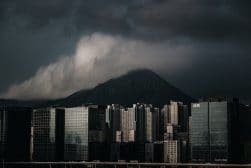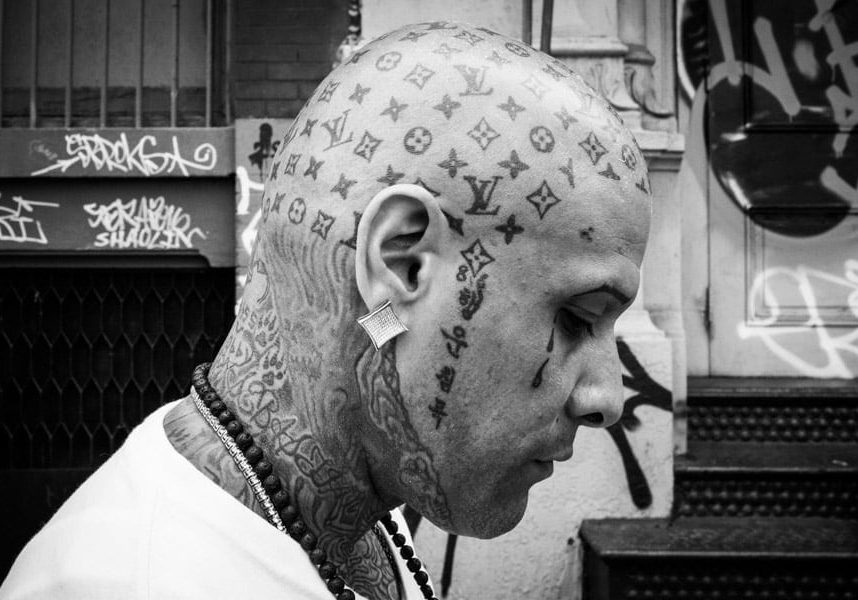
12 Essential Street Photography Tips for Urban Shooting
From lenses and camera settings to finding interesting subjects, these 12 street photography tips will help you take it to the next level.
Learn | Street Photography | By James Maher
While street photography can seem simple on the surface, photographers quickly realize how difficult it can be once they try it out.
This being said, there are some important tips on street photography that can speed up the learning curve significantly.
When done well – when a street photographer is in the ‘zone’ so to speak – street photography can feel like there isn’t even a camera in your hands – it’s just your eyes and the scene. But getting the basic strategies down is necessary to get to this step.
From your equipment and camera settings to what to look for and how to act, there are some simple strategies which will transform how comfortable you feel out there and the quality of photographs that you come back with.
So here they are – my top 12 street photography tips in 2024!
What is Street Photography?
Street photography is the one that shows everyday life in public spaces. To make it interesting and different from a simple snapshot, you need to capture something called ‘the decisive moment’.
This term was coined by the great photographer Henry Cartier Bresson in a publication entitled the same way. What it means is that your picture needs to capture the essence of an ephemeral event.
To do this, he suggested that you need knowledge and intuition to pick the right frame and press the shutter at the right time.
Aside from him, there are many authors and theorist that have discussed what elements constitute street photography.
Most of the debates centres around two topics: Should there be a person present to be considered street photography? And, should it be a candid photo?
There’s nothing written in stone, so go out to shoot, get ut of your comfort zone and reach your own conclusions.
12 Candid Street Photography Tips
1. Know How to Set Up Your Camera
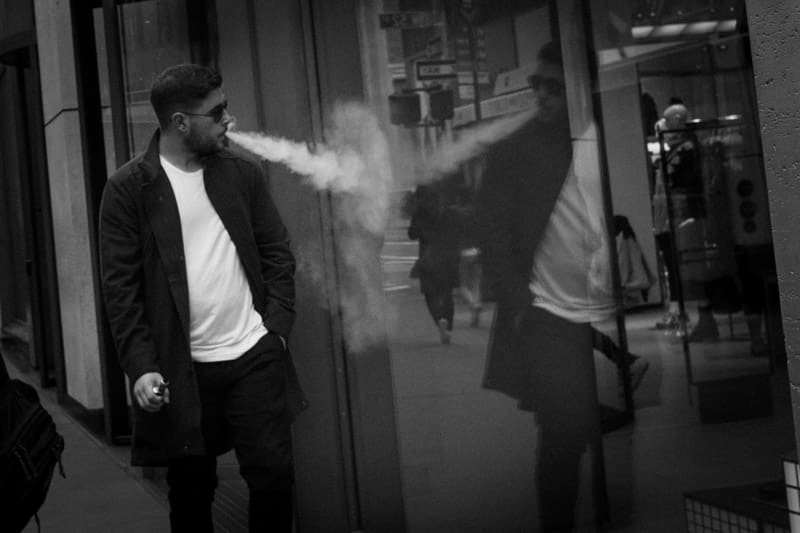
Street photography is such a quick and spontaneous form of photography that our goal is to set up our camera quickly so that it’s done and out of the way.
The more time you have to spend thinking about your settings, the less you’ll be able to concentrate on capturing those incredibly fast-moving moments.
The first step is to look at how strong the light is and then set your ISO accordingly. I don’t generally like using ISO-Auto because the camera will typically choose an ISO that is much lower than we really want.
- Raise your ISO up!
My general rule is to use ISO 400 in sunlight, 800 in light shade, 1600 in dark shade, and 3200 to 6400 from dusk to evening.
However, I always set my settings for the shady areas of the street (unless I decide to shoot strictly in the sun for a long time).
That way, wherever you aim your camera (for instance, if the best moment of your life pops out in a shaded area), you’ll still get a sharp shot.
The reason we use a high ISO is that it helps to have a deeper depth of field and faster shutter speed to come back with sharp street photos.
The deeper depth of field will help with street shots that have multiple interesting subjects at different depths and it will help you still get the focus correct if you happen to miss the subject by a bit.
The faster shutter speed will freeze the motion in your subjects.
How Much Do You REALLY Know About Photography?! 🤔
Test your photography knowledge with this quick quiz!
See how much you really know about photography...

- What is the best aperture for street photography?
I typically try to use an aperture of around f/8 (on a mirrorless camera) whenever possible.
As the light gets lower, I will slowly lower my aperture number and will even shoot at f/2.8 or f/2 in the evening. But f/8 has a great mix between good depth of field and letting in enough light to your camera.
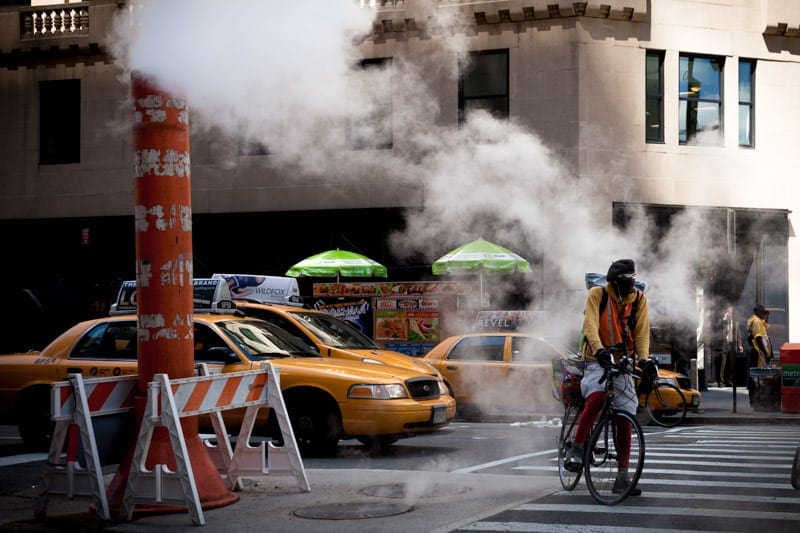
I tried and failed for like 8 years to get a shot I liked with a bike messenger. Same thing with that classic NYC steam. Then all of a sudden they came together.
- What is the best mode for shooting street photography?
Street photography can be done well in Aperture Priority, Shutter Priority, and Manual Modes, but I prefer to use Aperture Priority most of the time.
Since light changes constantly and we want to focus our attention on photographing, it helps to let the camera do some of the work. Changing the settings constantly on Manual Mode will really take away your focus.
With Aperture Priority, you can dial in your aperture to exactly what you need and all you have to do is pay attention to your shutter speed occasionally.
I try to keep my shutter speed above 1/250th of a second whenever possible to freeze motion in my subjects, although I’m okay with using shutter speeds of 1/125th or 1/80th at night or in dark situations.
And of course, slowing your shutter speed more to induce motion blur in people can add an incredible look to your street photos.
Shutter Priority can work just as well as Aperture Priority but I just prefer having full control over the aperture that’s being used.
Do professional photographers use aperture priority? Most of the ones I’ve met do, and the rest use a mixture of manual mode and AP.
2. Choose The Right Cameras and Lenses

Street photography gear of Juan Carlos Ortiz
There is the true but cliché saying that you can use any camera for street photography.
While you certainly can, some cameras and lenses will make your life a lot easier.
- What is the best camera for street photography?
Small cameras are typically the way to go for street photography as they don’t stand out as much. You will notice quickly on the streets how much less people notice you with a small, unobtrusive camera – see these compact camera reviews.
My preference is for mirrorless and micro four-thirds cameras. The technology and image quality has improved so much over the last five years that, for this type of photography, I don’t think SLRs hold any advantage.
Small cameras are also light, and this will allow you to photograph much quicker and in a more spontaneous way. And with the amount of walking that street photographers do, this will allow you to be out for much longer.

- What is the best lens for street photography?
There are many street photographers who do a fantastic job with a zoom lens, but I believe prime lenses will give you a big advantage.
Prime lenses allow you to get used to a specific focal length, so you can shoot in a faster, more instinctual and spontaneous way. Over time, you will get used to how your lens sees and you won’t have to waste any time zooming to the correct focal length before a shot.
A normal or wide-angle lens will allow you to get closer to your subject to show more intimate moments. The subjects will appear closer and larger while you’ll still be able to show a lot of the background.
The two focal lengths that I strictly use are 35mm and 50mm (full-frame equivalents).
A telephoto lens, on the other hand, can feel too far removed. It will compress the subject and background together and a lot of the nuance and details will be lost.
So pop a prime lens on the camera, look at the light, set your ISO, turn your camera to Aperture Priority, pick the aperture, check your shutter speed, and you have nothing else to think about except for the moment!
3. Become An Actor
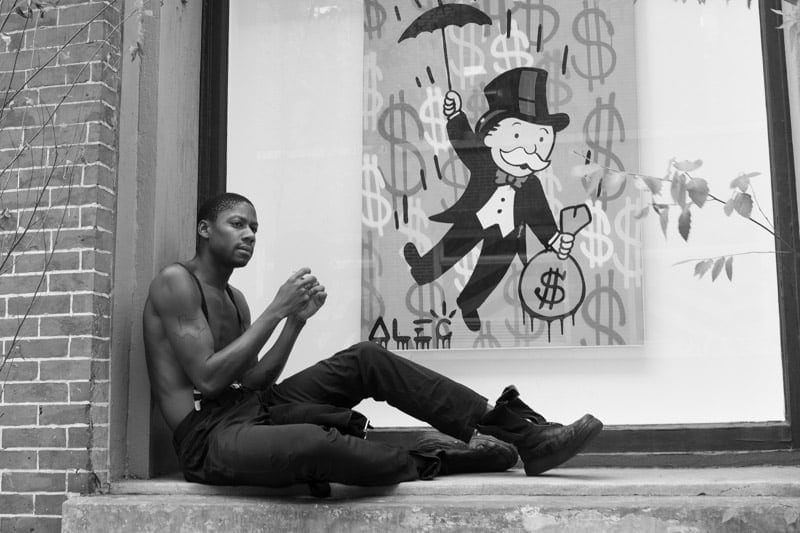
Of all the street photography tips on this list, this is probably the most important for becoming comfortable with close-up, candid street photography. How you look when you shoot is going to make all the difference in the world.
Often, I photograph so quickly that people just don’t notice, but I always make it seem like I’m not looking at them.
It sounds simple to say, but just make it seem like you’re looking at the background behind the subject and that they just happen to be in the way.
If you do this right, you can get away with nearly anything – a key to candid documentary photography.
If I really need to be candid, I will go as far as aiming the camera above or to the side of a person as if I’m photographing the background, then moving the camera to them to take the shot, and then moving it back to the background.
Doing this will make it seem like you were just looking around with the camera.
The key here is to not take the camera away from your eye right after you take the photograph, which is what most people do. This will let the person know that you took their photograph.
Instead, let the person walk past or move your camera away from them before you remove the camera from your eye.
4. Pick a Spot and Wait
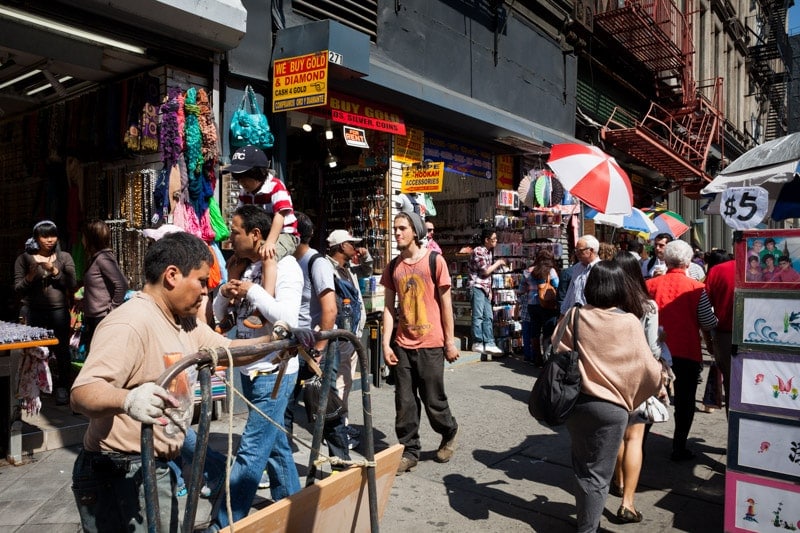
I love to walk and explore, and if you’re a street photography enthusiast, I assume you do as well. But it’s important to occasionally stop in the best locations and just wait.
The same amount of moments will occur whether you are walking or waiting, and by waiting you allow yourself to be ready with the camera in a great area of your choosing.
This will help you create complex photographs where all of the elements come together. All you need is a little luck and time in the right location.
This will also allow you to get closer photographs much easier because people will be entering your personal space instead of you entering their space.
You can notice an interesting person as they come towards you and get yourself in a position to get a close shot all while making it look like you’re just photographing the background behind them.
Many photographers have their favorite corners and places that they go back to over and over again because of this.
5. Get Closer
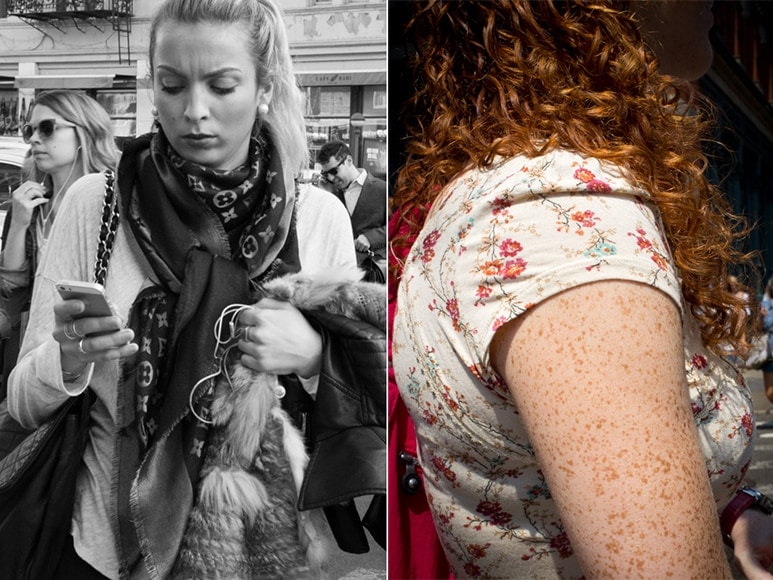
Getting close is one of the toughest things to do in street photography, but it’s a very important skill to develop over time.
If you’re nervous, start far away and work your way closer over time.
If you’re really nervous, you can even start with a few street portraits. Asking someone for their photo will help you get comfortable quickly, and it’s a great way to get used to getting in close (and also realizing that most people will be flattered)!
However, with a small, light camera and prime lens, some acting, and waiting in the right place to intersect with your subjects, you can learn to get close without your subjects noticing that you’re taking their photographs.
Getting close will allow you to capture more intimate moments. Your viewers will feel part of the scene, and expressions, gestures, and emotions will be much more noticeable.
6. Embrace Spontaneity and Imperfection
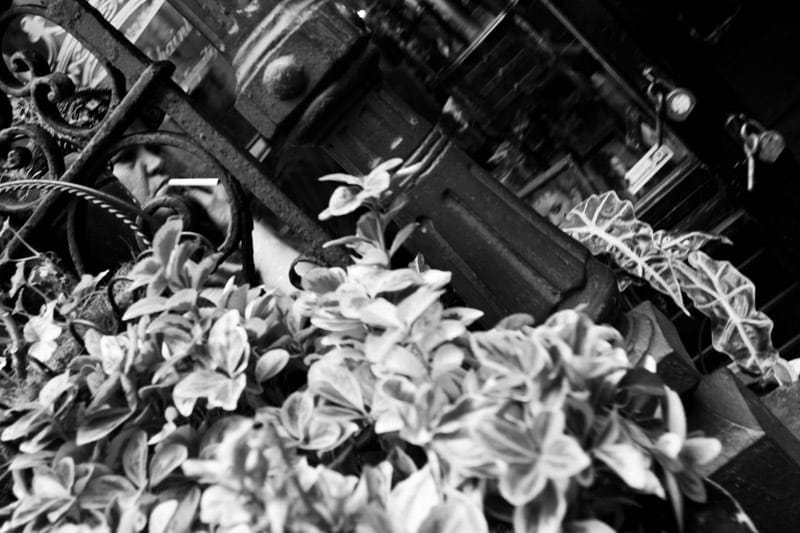
I see a lot of photographers who come from cityscape, landscape, or portrait backgrounds who try to get everything perfect. If something is slightly off with a street photo, they get annoyed and consider it a problem.
But street photography is not perfect – it’s far from it.
We are celebrating life and reality. If the moment is fascinating, no one will care if it’s grainy, off-kilter, a little blurry, or if a tree is in the wrong place.
Yes, sometimes these things will ruin street photos, but just as often they will make the moment feel more real.
It is, of course, important for these photographs to be beautiful. But the most necessary aspect is that we capture an interesting moment. If we do that, everything else falls into place.
A similar problem with transitioning from static forms of photography to the fast-moving streets is becoming more spontaneous with your shooting.
Many photographers will try to line everything up perfectly and get in a perfect position, and by that time not only has the moment gone, but the subject is already a block away.
Many of the best moments happen in an instant. The looks in people’s eyes, those emotions that are gone before you barely notice them… This makes it very important to go with your gut.
If you feel the potential for a moment to happen, embrace your gut and reaction time and just go for it.
Most of the time, the photographs will turn out terrible, but when this works you will find it will allow you to capture some of your most interesting photographs.
7. Capture Expressions, Emotions, and Gestures
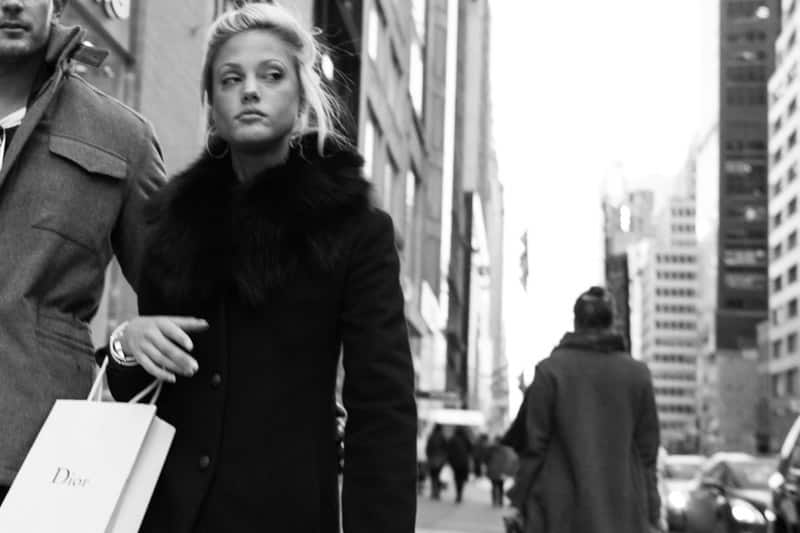
There are those moments in street photography where everything comes together. The luck shines upon you from the street photography gods.
But those moments happen when they happen, and there’s much more you can capture in between.
The purpose of street photography is to show something just beneath the surface. It’s to share emotions, feelings, and ideas. And one of the most effective ways of doing this is to show these emotions in your subjects.
Pay attention to the looks in people’s eyes, the expressions on their faces, and the gestures they make with their bodies.
When I photograph people, the first thing I look at is their eyes. A good look in the eyes can carry an entire photograph.
Over time, you will start to become good at finding people who wear their emotions on their sleeves, so to speak. These are the people you want to photograph.
I would much rather see a normal person with a powerful expression over the flashiest person just walking down the street without any emotion.
8. Revisit the Same Areas
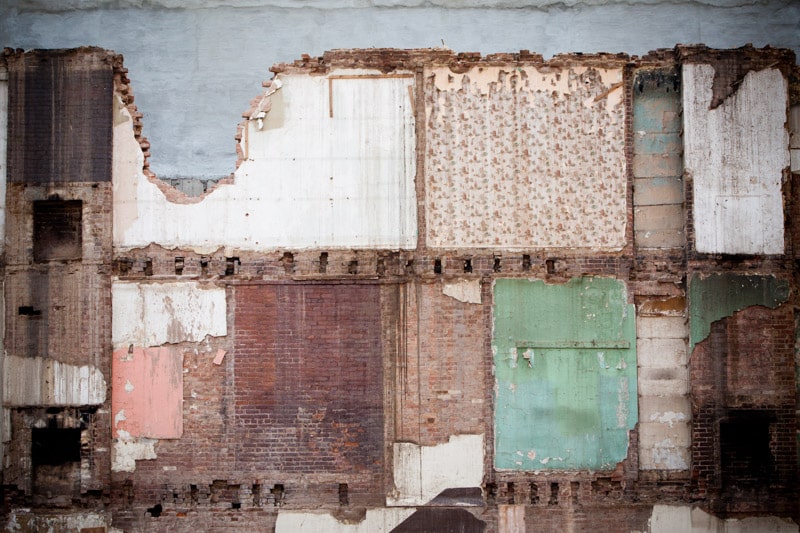
It can be tempting to always explore new places or to only do street photography when you travel, but in doing this a lot of people neglect their front door.
Capturing areas that you’re intimate with and going back over and over again is one of the best ways to improve your street photography.
The way to capture more nuanced photographs is to become more familiar with the areas you’re photographing in.
You will become more comfortable and familiar with the people and you will find new and interesting things each time you go back that you neglected before.
I constantly stumble upon things that I can’t believe I missed in places that I’ve photographed for years!

This is now a shiny new building.
And these areas don’t have to be the most crowded or overtly interesting ones.
Explore quiet places or places that may traditionally seem a little ‘boring’ for street photography. These can be some of the most fascinating to photograph in, but they can take a little while to get used to and understand.
The key is to capture the spirit of the area. Boring and quiet can actually be fascinating.
Sometimes it may be harder to capture candid photographs of people, so add some street portraits to the project.
To get some inspiration, check out the work of William Eggleston and Alec Soth.
9. Study Famous Street Photographers

This is another of the most important street photography tips.
There is such a wide variety of ways you can shoot street photography and so many photographers creating different styles on the same streets, that it’s just incredible.
By exploring the work of other photographers, both famous street photographers and contemporaries, you’ll open your eyes to everything that’s possible. You’ll start to notice new moments to photograph that you would not have seen otherwise.
Over time, you’ll begin to take the best aspects of the photographers you relate to the most and build them into your own style.
But make sure to go beyond just looking at the best shots of photographers on the internet and on their websites.
Purchase some street photography books. Photography books have become the ultimate way for many photographers to share their full vision.
It’s in these books where you can see not only the top, most jaw-dropping photographs, but also the subtle ones that get lost or are never shown on the internet.
You can see how the artist sequences the work to build a feeling and story. This is one of the true artforms within the genre of street photography.
10. Look Inward
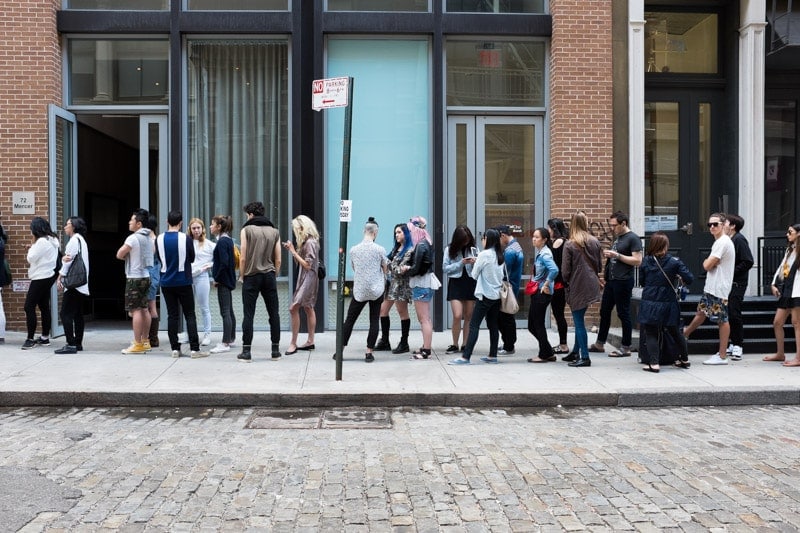
Street photography is a very personal form of photography. It allows you to capture feelings and stories in the outside world, but the strongest of this type of work connects the photographer to it. These are personal stories.
The better you know yourself, the better a photographer you will become.
Look inward, think about what you are feeling and how you perceive your subjects, and bring this out in your work.
Are you optimistic, anxious, lonely, happy, angry, or filled with dread? Those are just a few examples. But search for subjects and moments that show these feelings.
You will be better at noticing these moments because it’s what you yourself are going through.
This is a very important way to be able to capture the type of intimate photographs that will resonate with your viewers.
After looking for long enough at your work, they may start to feel like they know you a bit.
11. Shoot Street Photos without People

We have talked a lot about capturing areas, but it’s important to stress this additional point. Street photographs do not have to have people in them.
Just as you can show the spirit of a person with a photograph, you can capture the spirit of an area.
Street images that don’t contain people need to go beyond just the decorative.
This work is different from capturing a cityscape where the purpose is to capture the most beautiful scene possible. The purpose here is to capture the spirit of the area and if the photo happens to be beautiful, then that’s a plus.
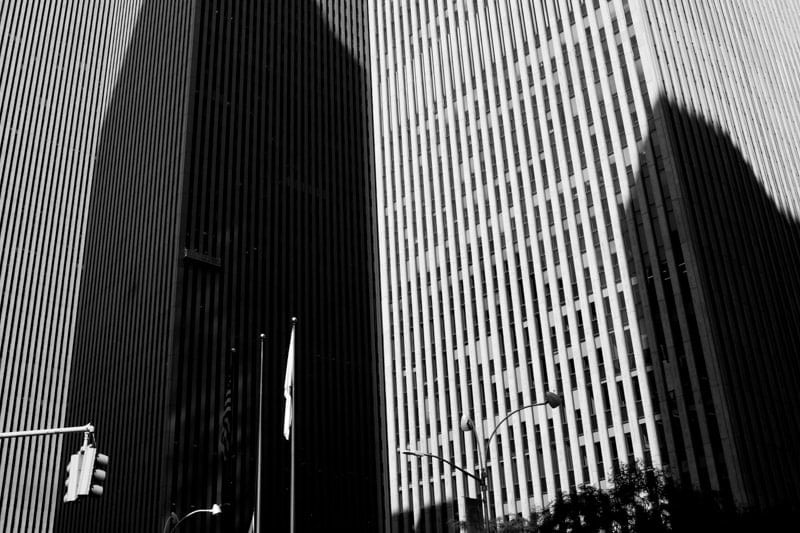
Many people will find a spectacular scene and wait for a person to cross into it to capture the photo. They feel that the person is what makes it a street photo, but that couldn’t be further from the truth.
Often there is nothing very interesting about these people (in the photograph at least), and their presence actually takes away from the scene and the moment.
If you have an incredible scene, a person that enters has to be able to stand up in interest to that scene; otherwise, just leave them out.
12. Master the Art of Sequencing and Editing
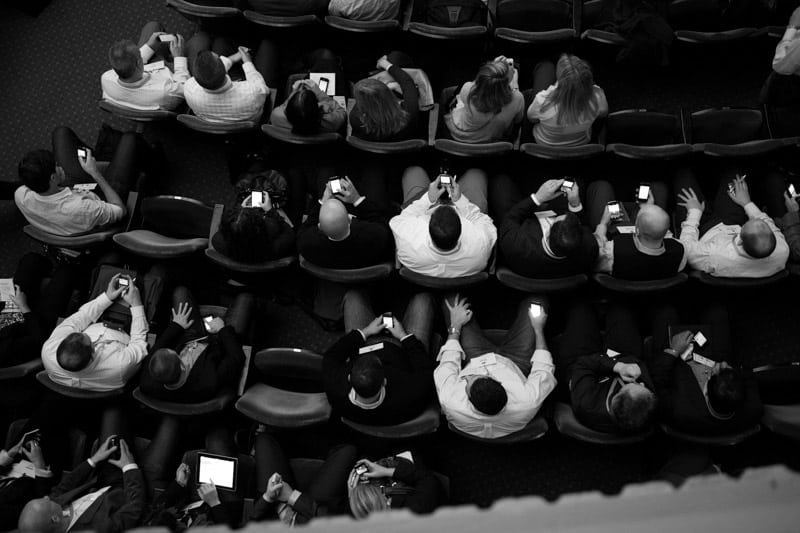
The photographing aspect of street photography is really only half the battle. The other half is your editing.
Editing is a process that you need to spend a lot of time on to improve your work. The work you do here will inform your work on the street and allow you to notice more moments and come back with more interesting photographs.
Grouping your photography is incredibly important. Create groups of similar photographs and begin to develop stories and ideas.
Sometimes a group will start with random like-minded photographs and develop over time into an idea, and other times you will start with an idea before you have any photographs for it.
Over time, you may find that these ideas will morph and change significantly. Years down the road they may look completely different and some of your favorite photographs early on will not even make the cut anymore.

Be ruthless with your editing. It’s a tendency for photographers to share too much work and the viewer can get lost in that and judge you on your weakest images.
Try hard to only show your best work as that’s what will keep people’s attention.
And one of the most fascinating (and difficult) aspects of editing is sequencing. How do you place these photographs one after another to achieve the story that you want to tell?
Are these photographs too similar or too different to show next to each other? How do I pace the project? How do I add enough surprise to it? Even though this photograph is wonderful, does it really fit with all the others?
There is so much to consider with sequencing a project, and I highly suggest studying street photography books to see how other photographers have done it.
20 Famous Street Photographers
If you’re looking for some inspiration for your next street photography outing, here are some of the world’s most famous street photographers – both past and present:
- Henri Cartier Bresson
- Garry Winogrand
- Lee Friedlander
- Saul Leiter
- Joel Meyerowitz
- Vivian Maier
- William Klein
- Robert Frank
- Elliott Erwitt
- Martin Parr
- Helen Levitt
- Diane Arbus
- Daido Moriyama
- Alex Webb
- Bruce Davidson
- William Eggleston
- Trent Parke
- Susan Meiselas
- Bill Cunningham
- Mark Cohen
See here for more famous street photographers.
Street Photography FAQ
What is ‘good’ street photography?
Like any other type of photography, good street photography is the one that tells a story and makes the viewer reflect on it or feel something when they look at it.
To achieve this, you need an interesting topic or subject and good use of the technique. The right composition and management of light will help you tell the story with your artistic view.
What is the purpose of street photography?
It’s part of the human condition to register history; street photography is part of that natural impulse.
Photographing our environment comes from the desire to transcend time, and it’s something that we all feel. Just look at how smartphone photography has changed the field. We now capture every aspect of our daily lives.
How do I start street photography?
Fortunately for street photography, you don’t need to invest much in gear, what you need is to get over the fear most of us have to photograph strangers.
You can start close to home, this way you’ll feel more comfortable, which translates as confidence. Pick a spot and be patient, wait for the right light and the right subject.
Start talking to people. You’ll see that more often than not they don’t have a problem with being photographed.
Finally, try setting small achievable goals each time you go out, and follow the street photography tips from this article. Have fun with it!
Is street photography creepy?
There is a very thin line that defines what is or isn’t OK when you’re doing street photography. This line also changes depending on the culture (what’s acceptable) and the country (what’s legal). You need to be aware of privacy laws, copyright laws, and of course, ethics.
For example, if you’re photographing a stranger on the street and they ask you to stop, can you still photograph them?
In the United States – legally speaking – you can. This can change from state to state though, but in general, freedom of speech (that includes photography) prevails as long as you and your subject are in public spaces.
Of course, the difference between you can, and you should is more on the ethical ground. Back to the legal issues, if the subject was in a private space like their garden, then you can’t photograph them even if you’re on the street because then it prevails the expectation of privacy.
If the same situation happened in the UK, you can’t keep photographing a person who doesn’t want to be photographed. This is because it can be considered harassment which is illegal, and even a criminal offence in some parts of the country.
(See also: Is It Illegal to Take Pictures of People in Public?)
Anyway, in most countries photographing in the streets is allowed – with some exceptions like Spain, Switzerland, or Brazil, where you need consent to take the picture.
It’s a different story when it comes to the use of those photographs. It’s not the same if you are on vacation and take photographs of the places you visit for your own memories than using them to illustrate a travel blog.
Let’s say you photograph a busy street in NY, and then you want to use it for editorial content. Generally speaking, you don’t need to have consent from the people in the picture to do it.
If instead of a crowd it’s just a small group of people or a single person, it depends on the country. In the US or the UK is still legal to publish that image, but in countries like Italy or Mexico is not, you would need a model release.
When you want to use your images for commercial purposes, you need a model release in 99% of the countries. You can check some general rules throughout the world in this guideline.
In any case, I advise you to do your homework and get informed before about the country’s regulations before you go out to shoot. Also, follow your common sense, be respectful, and whenever possible, ask for permission. That’s the best way to avoid being a creepy street photographer.
Final Words on Street Photography

After all this – How can I get better at street photography?
There is a lot to consider here.
The first step is to get comfortable with your camera and technically taking good photographs, and the next step is to think about what you’re photographing so that you can capture interesting moments and ultimately a fascinating body of work.
But the real key is to walk. You need to enjoy the walk and the exploration side of it to truly become a good street photographer.
The enjoyment needs to come from the practice of exploring and thinking, otherwise you’ll get bored and stuck too often.
The best moments come infrequently and that can be frustrating, so it’s important to separate yourself from that. The photos are just the icing on the cake.
Since street photography is based on luck and chance, and while the luck and chance will all even out over time, you have to put in that time to not only improve but to allow these amazing moments to occur in front of you.
So how can I get better at street photography? Ultimately, love the walk and spend a lot of time doing it.

Check out these 8 essential tools to help you succeed as a professional photographer.
Includes limited-time discounts.









